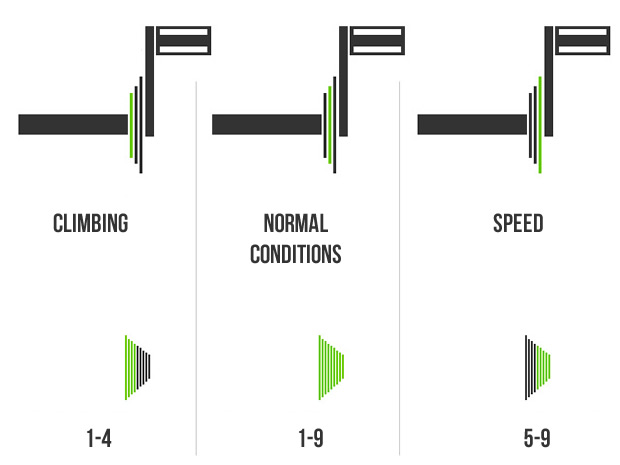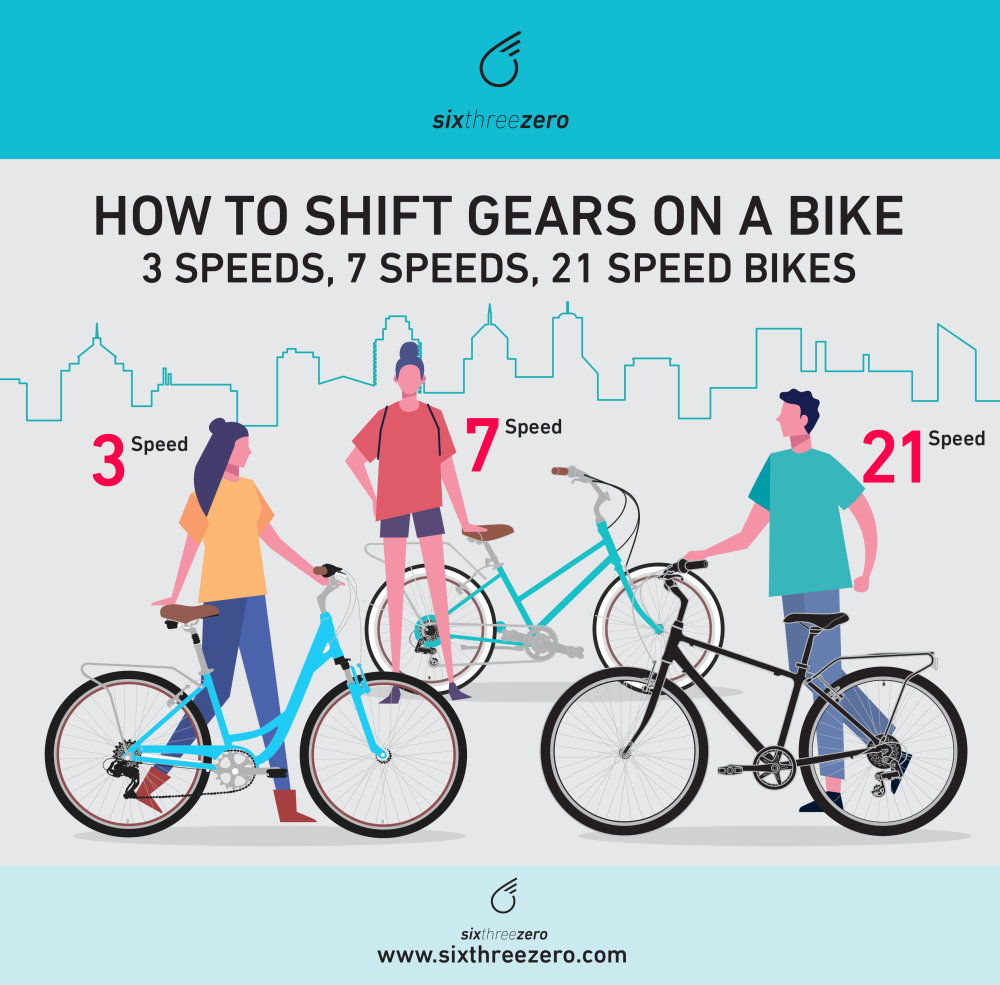Shift gears on a bike when climbing hills or accelerating. Change gears to maintain a comfortable pedaling speed.
Cycling efficiently requires knowing when to shift gears. Proper gear shifting can make your ride smoother and more enjoyable. Shift to a lower gear when climbing steep hills to reduce resistance. Use higher gears on flat terrain or when descending for faster speeds.
Anticipate changes in terrain and adjust gears beforehand. Practicing gear shifting improves your cycling performance and conserves energy. Understanding your bike's gear system is crucial for optimal performance. Always ensure your bike's gears are well-maintained for smooth transitions. Proper gear management helps prevent strain on your knees and prolongs your cycling endurance. Stay attentive and responsive to your riding conditions for the best results.
Introduction To Gear Shifting
Shifting gears on a bike can seem confusing to beginners. Understanding gear shifting helps make biking smooth and enjoyable. This section covers the basics of gear shifting.
Importance Of Gear Shifting
Gears help you ride efficiently. They make it easier to pedal uphill or faster on flat roads. Proper use of gears can save energy and reduce strain on your legs.
- Efficiency: Gears help you maintain a steady cadence.
- Comfort: Shifting gears reduces physical stress.
- Speed: Proper gear usage can make you ride faster.
Basic Mechanics Of Gears
Bikes have front and rear gears. The front gears are called chainrings. The rear gears are known as the cassette.
| Component | Function |
|---|---|
| Chainrings | Located at the front, control major gear shifts. |
| Cassette | Located at the back, fine-tunes your gear ratio. |
The chain moves between these gears. This changes the bike's resistance. Lower gears make pedaling easier but slower. Higher gears make pedaling harder but faster.
- Low gears: Use for uphill or tough terrain.
- Middle gears: Use for flat roads and moderate speeds.
- High gears: Use for downhill or fast riding.
Practice shifting gears to understand how your bike responds. Smooth gear shifting will improve your biking experience.
Understanding Your Bike's Gears
Knowing when to shift gears on a bike can improve your ride. Understanding your bike's gears is the first step. This knowledge helps you ride efficiently and enjoyably.
Types Of Gears
Bikes come with different types of gears. Here are the main types:
- Derailleur Gears: These are the most common. They use a chain to move between gears.
- Hub Gears: These are enclosed in the rear wheel hub. They need less maintenance.
- Single Speed: These bikes have one gear. They are simple and light.
Gear Components
Your bike's gears have several parts. Each part plays a role in shifting smoothly. Understanding these components helps you maintain your bike better.
| Component | Description |
|---|---|
| Chain | Connects the front and rear gears. It moves to shift gears. |
| Derailleur | Moves the chain between gears. There are front and rear derailleurs. |
| Shifters | Located on the handlebars. You use them to change gears. |
| Cassette | A set of gears on the rear wheel. Also called a cogset. |
| Chainrings | Gears attached to the pedals. They are part of the crankset. |
Keeping these components in good condition ensures a smooth ride. Regular maintenance can prevent gear issues. Clean and oil your chain often. Check the alignment of your derailleur. Ensure your shifters are responsive.
When To Shift Gears
Knowing when to shift gears on a bike can improve your cycling experience. Shifting gears at the right time helps you maintain a comfortable pace and conserve energy. This guide will help you understand the best times to shift gears on different terrains.
Shifting On Flat Terrain
On flat terrain, your goal is to find a steady pace. Use the middle gears to maintain a comfortable speed. If your pedaling feels too easy, shift to a higher gear. This will increase resistance and help you go faster. If pedaling becomes too hard, shift to a lower gear.
| Condition | Action |
|---|---|
| Pedaling too easy | Shift to a higher gear |
| Pedaling too hard | Shift to a lower gear |
Shifting On Inclines
Inclines require more effort. Start by shifting to a lower gear before you reach the hill. This makes it easier to pedal as you climb. If you start struggling, shift to an even lower gear. Keep a steady pace to avoid getting tired quickly.
- Approach the incline.
- Shift to a lower gear.
- Maintain a steady pace.
- Shift lower if needed.
Remember, shifting gears at the right time makes biking easier and more enjoyable. Practice shifting gears to find what works best for you.

Credit: cycling.today
Techniques For Smooth Shifting
Shifting gears on a bike can be tricky. Proper technique ensures smooth rides. Below, we explore effective methods for smooth shifting.
Anticipating The Shift
Anticipating the shift is crucial for maintaining momentum. Before a climb, shift to an easier gear. This prevents sudden stops and helps maintain speed.
Similarly, shift to harder gears when descending. This allows better control and efficient pedaling. Always listen to your bike's sounds. If you hear grinding, you might need a gear adjustment.
Practice shifting gears on flat roads first. This builds muscle memory and confidence for varied terrains. Smooth shifting also helps prolong the bike's lifespan.
Using Both Derailleurs
Using both derailleurs ensures optimal gear combinations. The front derailleur controls large chainrings. The rear derailleur manages smaller cogs.
To shift smoothly, use both derailleurs in sync. Shift the front derailleur first for major changes. Use the rear derailleur for fine-tuning.
For example, shift to a smaller chainring with a larger cog for easier pedaling. Combine a larger chainring with a smaller cog for more speed. Avoid cross-chaining. This happens when the chain stretches diagonally. It causes wear and tear.
Regularly check and maintain your derailleurs. Clean and lubricate them for smooth shifting. Keep cables tight for precise control.
Common Mistakes To Avoid
Shifting gears on a bike can be tricky. Many new riders make common mistakes. These mistakes can damage the bike and make riding harder. Let's explore two big mistakes: Cross-Chaining Issues and Shifting Under Load.
Cross-chaining Issues
Cross-chaining happens when the chain is at an extreme angle. This occurs when using the smallest chainring and the smallest cog together, or the largest chainring and the largest cog together. Cross-chaining can cause several problems:
- Increased wear on the chain
- Higher chance of chain slipping
- More stress on the derailleur
To avoid cross-chaining, keep the chain straight. Use the middle gears more often. This will extend the life of your chain and gears.
Shifting Under Load
Shifting under load means changing gears while pedaling hard. This can damage your bike. Here are some issues caused by shifting under load:
- Chain might break
- Gears can wear out quickly
- Derailleur can get misaligned
To prevent these problems, ease off the pedals when shifting. Shift to a lower gear before you need it, like before a hill.

Credit: www.rei.com
Adjusting To Different Riding Conditions
Cycling offers various challenges and experiences. Knowing when to shift gears is key. Different riding conditions demand different gear strategies. This guide helps you navigate these challenges smoothly.
Wet And Slippery Surfaces
Riding on wet or slippery surfaces requires caution. Use lower gears for better control. Lower gears help maintain a steady pace. Avoid sudden gear changes to prevent slipping. Maintain a relaxed grip on the handlebars.
Here are some tips for riding on wet surfaces:
- Check tire pressure: Lower pressure improves grip.
- Brake early: Wet brakes take longer to stop.
- Stay visible: Wear bright clothing.
Mountain Trails
Mountain trails present steep climbs and descents. Use higher gears for flat sections. Shift to lower gears for climbing hills. High gears on descents allow better control.
Consider these factors on mountain trails:
- Steep climbs: Use the lowest gear for more power.
- Flat sections: Maintain a medium gear for speed.
- Downhill: Higher gears give better control.
| Condition | Recommended Gear |
|---|---|
| Wet surfaces | Lower gears |
| Steep climbs | Lowest gear |
| Flat sections | Medium gear |
| Downhill | Higher gears |
Maintaining Your Gear System
Maintaining your gear system is crucial for smooth and efficient biking. Proper care ensures longevity and optimal performance. Below are key aspects to consider.
Regular Inspection
Regular inspection helps identify issues early. Check for wear and tear on the chain, cassette, and derailleur. Look for any loose bolts or screws.
- Inspect the chain for signs of rust or stiffness.
- Check the cassette teeth for wear.
- Ensure the derailleur is aligned correctly.
- Verify that all bolts are tight and secure.
Lubrication And Cleaning
Lubrication and cleaning are essential for a smooth ride. Clean the gears regularly to remove dirt and grime.
- Clean the chain using a degreaser.
- Wipe off excess dirt with a clean cloth.
- Apply lubricant to the chain links.
- Spin the pedals to distribute the lubricant evenly.
Repeat this process every few rides to keep your gear system in top condition.
| Component | Inspection Frequency | Maintenance Tip |
|---|---|---|
| Chain | Weekly | Clean and lubricate regularly |
| Cassette | Monthly | Check for wear and clean |
| Derailleur | Bi-weekly | Inspect alignment and adjust if needed |

Credit: www.sixthreezero.com
Enhancing Your Riding Experience
Shifting gears on a bike can greatly enhance your riding experience. It allows you to adapt to different terrains and conditions. Knowing when to shift gears ensures a smooth and enjoyable ride.
Choosing The Right Bike
Choosing the right bike is crucial for gear shifting. Different bikes have different gear systems. Some common types include:
- Road Bikes: Ideal for smooth pavements and high speeds.
- Mountain Bikes: Designed for off-road trails and rough terrains.
- Hybrid Bikes: A mix of road and mountain bikes, good for various surfaces.
Select a bike that matches your riding needs. A well-chosen bike makes gear shifting easier and more effective.
Training And Practice
Training and practice are essential for mastering gear shifting. Follow these steps to improve your skills:
- Start on Flat Terrain: Begin with flat surfaces to get a feel for the gears.
- Practice Shifting: Shift gears frequently to understand their effects.
- Climb Hills: Practice shifting while climbing hills to learn how gears help.
- Descend Safely: Use lower gears while descending to control your speed.
Regular practice helps you shift gears instinctively. This ensures a smooth and efficient ride.
| Terrain | Recommended Gear |
|---|---|
| Flat Roads | Medium Gear |
| Uphill | Low Gear |
| Downhill | High Gear |
Frequently Asked Questions
When Should You Shift Gears On A Bike?
Shift gears when pedaling becomes too hard or too easy. Adjust gears to maintain a comfortable cadence. This helps improve efficiency and reduce fatigue.
How Do You Know When To Shift Gears?
Shift when your pedaling speed is too fast or too slow. Listen to your body and the bike's performance.
What Gears Should You Use On Hills?
Use lower gears for climbing hills. They make pedaling easier and help maintain a steady pace.
Why Is Gear Shifting Important On A Bike?
Gear shifting ensures efficient riding and reduces strain on muscles. It helps maintain a consistent pedaling rhythm.
Conclusion
Mastering gear shifting enhances your biking experience. Proper timing improves efficiency and prevents wear. Practice regularly to develop intuition. Remember, smooth shifts make rides enjoyable. Prioritize understanding your bike's mechanics for optimal performance. Happy cycling!

No comments:
Post a Comment